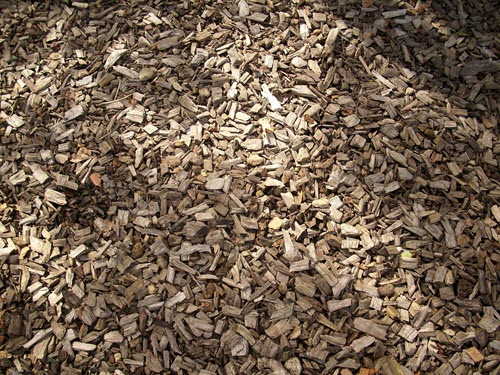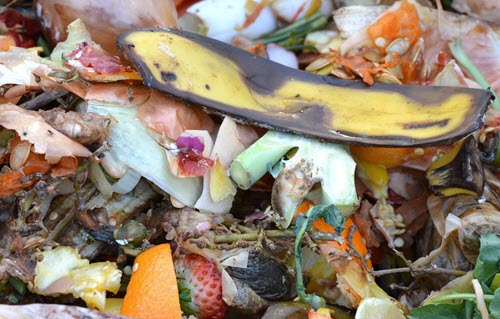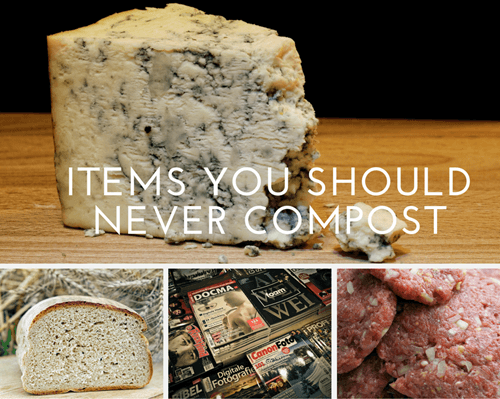Soil is the foundation of every healthy living plant. Without rich soil, there is little chance for plants to grow to their full potential. Nature is the master composter, decomposing fallen leaves, broken branches, and dead animals slowly and surely into humus – the dark top soil that is abundantly fertile and packed with nutrients and beneficial microbes that plants thrive on. Here is the complete guide to knowing the right items to add to your compost and items you should never compost.
This humus, often referred to as black gold is the “magic ingredient” that helps plants flourish and nature’s way of protecting them against pests and diseases. You can create this magic black gold in your own home too. I’ll discuss how to make your own compost from kitchen waste in my next post. But for now, let’s look at what items to add to your compost and which ones should be avoided to create the perfect healthy compost.
The Right Ingredients to Getting a Healthy Compost
Compost must comprise of 4 main elements – Browns, Greens, Oxygen and Water.
Browns

Browns are the dry materials that go into the compost. They are rich in carbon and supply energy to the bacteria, earthworms and other creatures that help in the decomposition process. These browns or carbon materials also absorb any excess moisture in the compost and helps in the free movement of air.
Examples of browns include branches, twigs, dry leaves, non-glossy paper products like newspapers, cardboard, sawdust, woodchips, and wood ash.
Greens

Greens are the fresh moist ingredients that add nitrogen and protein to the compost, allowing microbes to grow and reproduce. Greens take longer to decompose and to speed up the process must be cut into smaller pieces.
Examples of greens include food scraps, fruit and vegetable scraps, coffee grounds, cut grass, green manure, and teabag remains among others.
When including green matter, you must take care to avoid meat, fish, dairy products, cooking oil, and diseased plants. The key to a good compost is to properly balance the browns and greens. The compost should always contain more browns than greens. For successful composting, you need a ratio of browns and greens in the ratio 30:1.
Oxygen
Oxygen is another key element that helps in the decomposition of matter. When there is adequate airflow, the micro-organisms get oxygen to do their work and the decomposition happens faster. However, too much air circulation can dry out the compost while too little of it will suffocate and kill the microbes who are hard at work and cause a stink. When you are composting you can allow oxygen flow in a passive manner by natural convection or by turning the pile to aerate it.
Water

A dry compost will kill the micro-organisms. Hence it is essential that you check for moistness in the compost by touching it. If the compost is too dry, you can sprinkle a bit of water to keep it moist, but whatever be the case, your compost should never be soggy. If you find it soggy, add more browns.
Items You Should Never Compost

Rather than listing items you should compost, its easier to note the items you should avoid when composting.
Bread products: Avoid using bread, cakes, pasta and any baked goods as they can attract unwanted pests.
Cooking oil: Avoid cooking oil as it smells like food to pests. It can also disturb the compost’s moisture balance.
Diseased plants: Trash them. You don’t want to transfer fungal or bacterial infections to your compost and thereby to your plants.
Printed paper: Heavily printed magazines, catalogs, cards and wrapping paper won;t break down and the printing chemicals will be harmful to your plants.
Human or animal feces: Better to avoid pet litter, just to avoid any health risk.
Meat products: Bones, blood, fish and animal fats are powerful pest magnets, so keep them away from your compost.
Milk products: Milk, cheese, yogurt and cream are a pest’s delight so keep them off the compost.
Cooked Rice: Cooked rice is a fertile breeding ground for bacteria that you don’t want in your mix.
Sawdust: You can use sawdust but the risk is that you can’t be sure if the wood from which it came from was not treated with any chemicals. In the event you can’t determine it, avoid composting sawdust.
Used personal products: Tampons, diapers and sanitary pads that are soiled in blood or other fluids are a health risk. Avoid.
Walnuts: The juglone in walnuts is toxic to some plants.
Now that you know the key ingredients of a compost, make sure you use the right ingredients do create a perfectly good compost.
Don’t forget to check out my post on how to make your own compost at home with your kitchen waste. I’ll show you how I make my own compost at a minimal cost!
[…] is to find a proper balance between the greens and the browns. In my previous post, I discussed the key ingredients to making a good compost and items you should never use for composting. If you are new to composting, you may be concerned […]